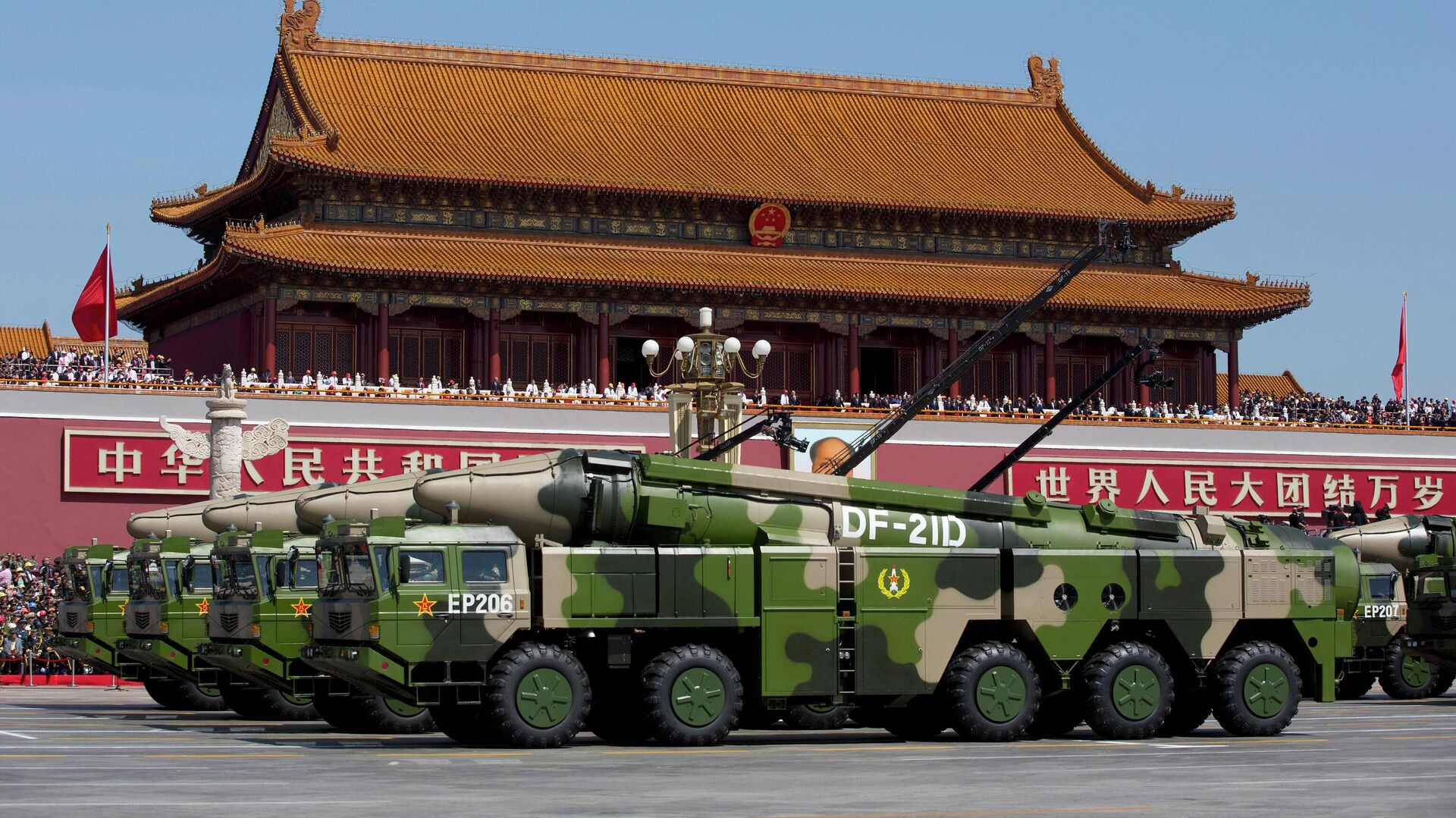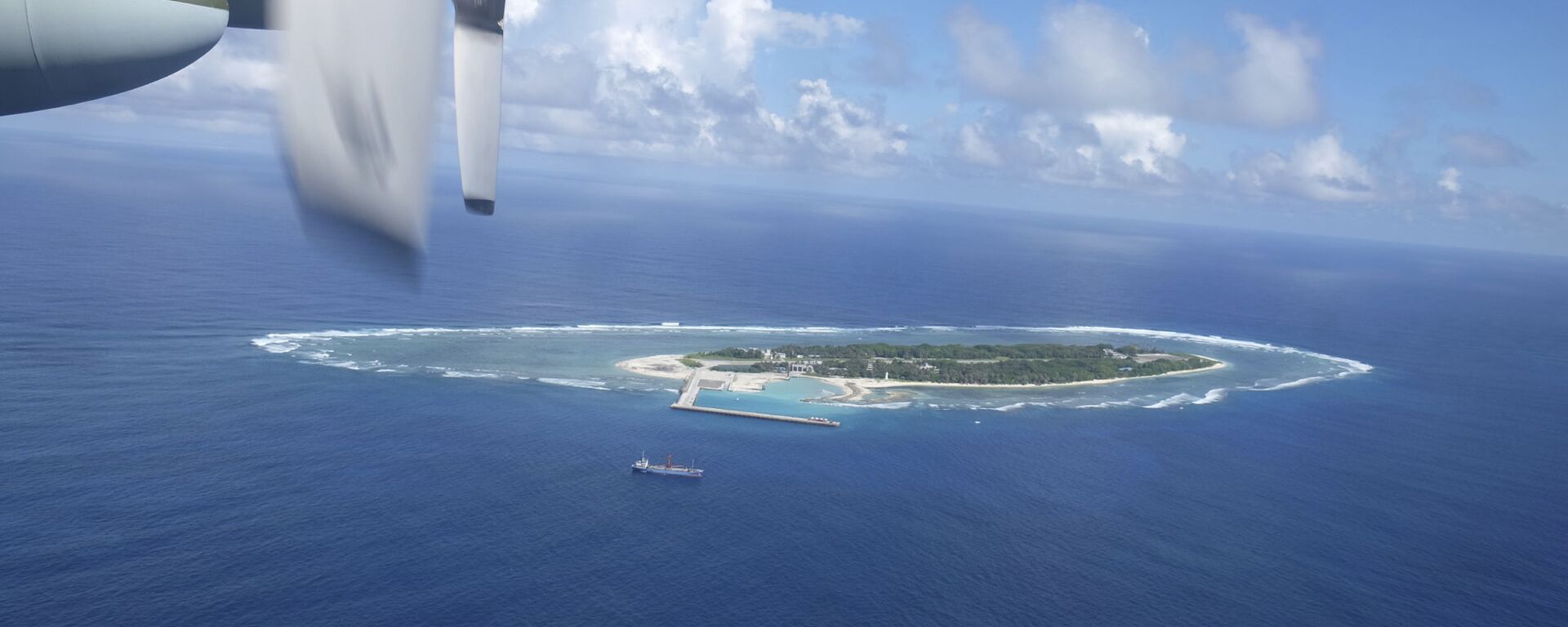https://sputnikglobe.com/20220512/china-has-built-navy-dummies-in-desert-to-practice-anti-ship-ballistic-missile-precision---report-1095448783.html
China Has Built Navy Dummies in Desert to Practice Anti-Ship Ballistic Missile Precision - Report
China Has Built Navy Dummies in Desert to Practice Anti-Ship Ballistic Missile Precision - Report
Sputnik International
China is known to be working on numerous anti-ship ballistic missiles (or ASBMs). Bejing reportedly has DF-21D and DF-26, land-based varieties, while the H-6... 12.05.2022, Sputnik International
2022-05-12T03:35+0000
2022-05-12T03:35+0000
2023-09-25T15:09+0000
china
military & intelligence
anti-ship ballistic missiles (asbms)
ship
missile tests
defense
https://cdn1.img.sputnikglobe.com/img/07e6/05/0c/1095448945_0:321:3071:2048_1920x0_80_0_0_8dfd80c78e2429a9b8e85a41dd47223d.jpg
China has been practicing its ship-targeting skills on new targets in a faraway desert, USNI News reported on Wednesday, citing new satellite imagery from the purported area.According to the report, the People's Liberation Army is practicing using long-range ballistic missiles to attack ships in port. Other target sites have emerged after China allegedly built aircraft carrier targets in the Taklamakan Desert, according to fresh satellite photographs, presented in the outlet's report.The image captured a line of large-scale target ranges spanning along the eastern edge of the desert. Several of them are purportedly naval, and two of them have layouts that resemble ships in port.In December, a site with full-scale piers and a destroyer-sized ship-like target were reportedly built almost 13 kilometers southwest of an extensive aircraft carrier layout. Then, per USNI News, a test missile hit the ship replica dead center in February, and the target was rapidly deconstructed and is gone as of May. This new target was discovered as part of All Source Analysis think tank's investigation into aircraft carrier targets, with extra information disclosed by Maxar Technologies' high-resolution satellite photography.Moreover, yet another similar naval base target was reportedly discovered some 300 kilometers southwest. The site was supposedly constructed in December 2018 but went unnoticed by defense experts. The pier is reportedly laid up similarly to the destroyer-like location, and it features ship targets, one of which is next to the most recent target. The type, location, and hits on these facilities all point to the targets being used for missile testing, per the outlet. Metal sheets appear to have been used to shape targets in the desert, allegedly, to imitate ship plating.Modern Anti-Ship Ballistic MissilesSmall circles of error probability (CEP), a measure of the distance from the aiming point where there is still a 50% chance of hitting, are found on modern "dumb" ballistic missiles, experts noted. However, if the target is a crowded port dock, the majority of the CEP is still water, and near-misses into the harbor are unlikely to have the desired effect.Infrared, optical, or radar may be used by Chinese missiles to build up a picture of the target. They could then fine-tune their trajectory to land precisely on the target. Still, it is impossible to say if the missiles use infrared or radar based on open-source data, although both are possible, the author argued. Modern targeting sensors are often linked to artificial intelligence, allowing the missile to distinguish targets and select the best alternative. If ASBMs can distinguish a ship from a dock, they can deliver a devastating first strike against an enemy navy, so fleets could be decapitated before they can escape to open sea or scatter.
https://sputnikglobe.com/20220321/us-navy-admiral-claims-china-has-turned-three-islands-in-south-china-sea-into-military-bases-1094038528.html
china
Sputnik International
feedback@sputniknews.com
+74956456601
MIA „Rossiya Segodnya“
2022
News
en_EN
Sputnik International
feedback@sputniknews.com
+74956456601
MIA „Rossiya Segodnya“
Sputnik International
feedback@sputniknews.com
+74956456601
MIA „Rossiya Segodnya“
china, military & intelligence, anti-ship ballistic missiles (asbms), ship, missile tests, defense
china, military & intelligence, anti-ship ballistic missiles (asbms), ship, missile tests, defense
China Has Built Navy Dummies in Desert to Practice Anti-Ship Ballistic Missile Precision - Report
03:35 GMT 12.05.2022 (Updated: 15:09 GMT 25.09.2023) Kirill Kurevlev
Managing Editor
China is known to be working on numerous anti-ship ballistic missiles (or ASBMs). Bejing reportedly has DF-21D and DF-26, land-based varieties, while the H-6 bomber carries another type, whose designation is unclear. In addition, PLA's cruisers can now allegedly deploy a smaller vessel, known at the moment as the YJ-21.
China has been practicing its ship-targeting skills on new targets in a faraway desert, USNI News
reported on Wednesday, citing new satellite imagery from the purported area.
According to the report, the
People's Liberation Army is practicing using long-range ballistic missiles to attack ships in port. Other target sites have emerged after China allegedly built aircraft carrier targets in the Taklamakan Desert, according to fresh satellite photographs, presented in the outlet's report.The image captured a line of large-scale target ranges spanning along the eastern edge of the desert.
Several of them are purportedly naval, and two of them have layouts that resemble ships in port.
In December, a site with full-scale piers and a destroyer-sized ship-like target were reportedly built almost 13 kilometers southwest of an extensive aircraft carrier layout. Then, per USNI News, a test missile hit the ship replica dead center in February, and the target was rapidly deconstructed and is gone as of May.
This new target was discovered as part of All Source Analysis
think tank's investigation into aircraft carrier targets, with extra information
disclosed by Maxar Technologies' high-resolution satellite photography.
Moreover, yet another similar naval base target was reportedly discovered some 300 kilometers southwest. The site was supposedly constructed in December 2018 but went unnoticed by defense experts.
The pier is reportedly laid up similarly to the destroyer-like location, and it features ship targets, one of which is next to the most recent target. The type, location, and hits on these facilities all point to the targets being used for missile testing, per the outlet.
Metal sheets appear to have been used to shape targets in the desert, allegedly, to imitate ship plating.
Modern Anti-Ship Ballistic Missiles
Small circles of error probability (CEP), a measure of the distance from the aiming point where there is still a 50% chance of hitting, are found on modern "dumb" ballistic missiles, experts
noted. However, if the target is a crowded port dock, the majority of the CEP is still water, and near-misses into the harbor are unlikely to have the desired effect.
Infrared, optical, or radar may be used by Chinese missiles to build up a picture of the target. They could then fine-tune their trajectory to land precisely on the target. Still, it is impossible to say if the missiles use infrared or radar based on open-source data, although both are possible, the author argued.
Modern targeting sensors are often linked to artificial intelligence, allowing the missile to distinguish targets and select the best alternative. If ASBMs
can distinguish a ship from a dock, they can deliver a devastating first strike against an enemy navy, so fleets could be decapitated before they can escape to open sea or scatter.


